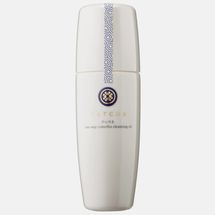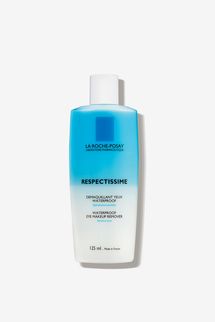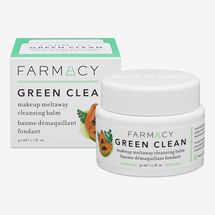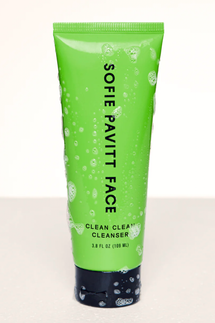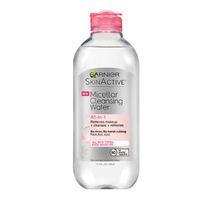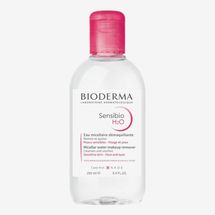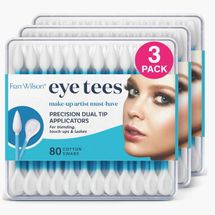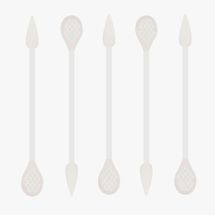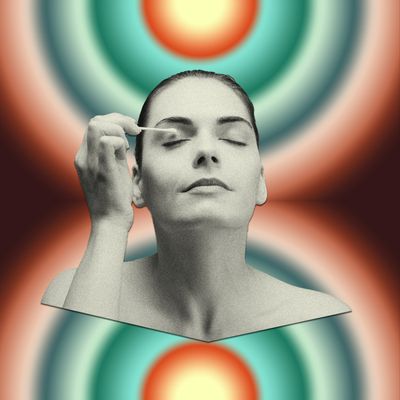
An easy three-step solution
Dear Beauty Editor,
I wear black eyeliner and mascara daily, but I swear it never really comes off fully. Like, even if I use a cleansing balm and then a regular face wash, I can still see the darkness near my lash lines, and if I run a Q-tip there it keeps coming up with gray stuff. How do I really, truly take my makeup off at night?
Thanks,
Michaela
When J.D. Vance started campaigning for vice president, the internet was convinced that he routinely wears eye makeup. To me, it looks like he’s dealing with the same morning-after situation that you’re describing, where leftover sootiness from mascara or eyeliner gets lodged between your lashes and won’t go away no matter how many times you wash your face. To help you (and Vance, if he’s interested), I asked a few pros how they deal with eye makeup that’s difficult to remove. They say you’re on the right track with the double-cleansing — but you’ll also need an assist from micellar water.
Step 1: Double-cleanse with something oily
Eyeliner and mascara typically contain oil-like ingredients that can’t be dissolved or washed away cleanly with water or water-based cleansers alone; you will need a product formulated with oils to dissolve the ones in the makeup. Daniel Martin, whose clients include Meghan Markle and Nicola Coughlan, likes to apply Tatcha the Camelia Cleansing Oil to a cotton pad, then gently press that over the eyes for 30 seconds to give the product time to break up the makeup. He says that when you remove the pads, there will still be cleansing oil left on your skin — and that’s a good thing. Add a little water to the remaining oil, and then massage it around your eyes and face. “The water emulsifies what’s left on the skin, and then acts as the double cleanse for the rest of the face and eyes,” he says.
For really stubborn eye makeup, you might want to add a dual-phase eye-makeup remover into the mix, suggests makeup artist Amber Dreadon, who works with Lorde and Phoebe Bridgers. “They’re the ones that you shake together to mix a water-and-oil layer,” she says. They’re “usually the most powerful, so they’ll remove everything.” Her favorite dual-phase remover is La Roche-Posay Respectissime. But, she says, for her makeup removal, a double cleanse with Farmacy Beauty Green Clean cleansing balm followed by Sofie Pavitt Clean Clean gel cleanser usually gets the job done.
Step 2: Micellar water and flat cotton swabs
After makeup remover and/or the double-cleansing, you may notice some residual darkness around your eyes. That’s where micellar water comes in. Martin uses the Garnier Micellar Cleansing Water (“the one with the pink top”), while Dreadon is partial to the Bioderma Sensibo (she says it works especially well with the La Roche-Posay eye makeup remover). Just saturate a cotton swab with the micellar water, and then use it to wipe away any remaining makeup.
I used to do this step with a regular Q-tip, or even a pointed cotton swab for precision, but Dreadon says a paddle-shape works best. She’s right! For me, switching shapes was a game-changer: The wider, flat tip picks up more makeup and seems to escort it off my face more effectively. I recommend the larger end of the double-sided Fran Wilson Eye Tees, which I’ve seen in many makeup artists’ kits. (If you prefer not to use single-use plastics, check out these swabs that have a paddle end but are made with a paper-based stick.)
And if you think that swab will work the same if it’s moistened with plain-old water (or — you know you’ve seen moms do this — a little saliva), then you’re mistaken. I won’t bore you with a long chemistry lesson, but micellar water isn’t a marketing gimmick. It contains mild surfactants that work at a molecular level to form a dirt- and oil-seeking magnet (called a micelle). Once the micelle grabs on to any remaining eye makeup on your face, the surfactant molecules reorient to hold the makeup away from your skin so you can wipe or rinse it away.
There is one slightly gimmicky thing about micellar water, in my opinion, and that’s the idea that you don’t have to wash your face again after you use it. Sure, the physical action of wiping away the makeup with the swab means the skin around your eyes and between your lashes will look clean. But some of those surfactants will remain behind, so if you have sensitive eyes or skin, they could cause irritation.
Step 3: Rinse or wash your face again after the micellar water
Once you do that, you should be good to go. Is it a lot of work to take off your eye makeup? Yes. But in case you haven’t noticed, the mascaras and eyeliners these days have serious longevity, and the better the makeup performs, the more difficult it is to remove. “One of my favorite cake eyeliners is also the hardest to take off,” Martin says. “When it’s time to remove it, you need patience and a prayer.” And, of course, the steps above.
Send your questions to AskABeautyEditor@nymag.com. (By emailing, you agree to the terms here.)



